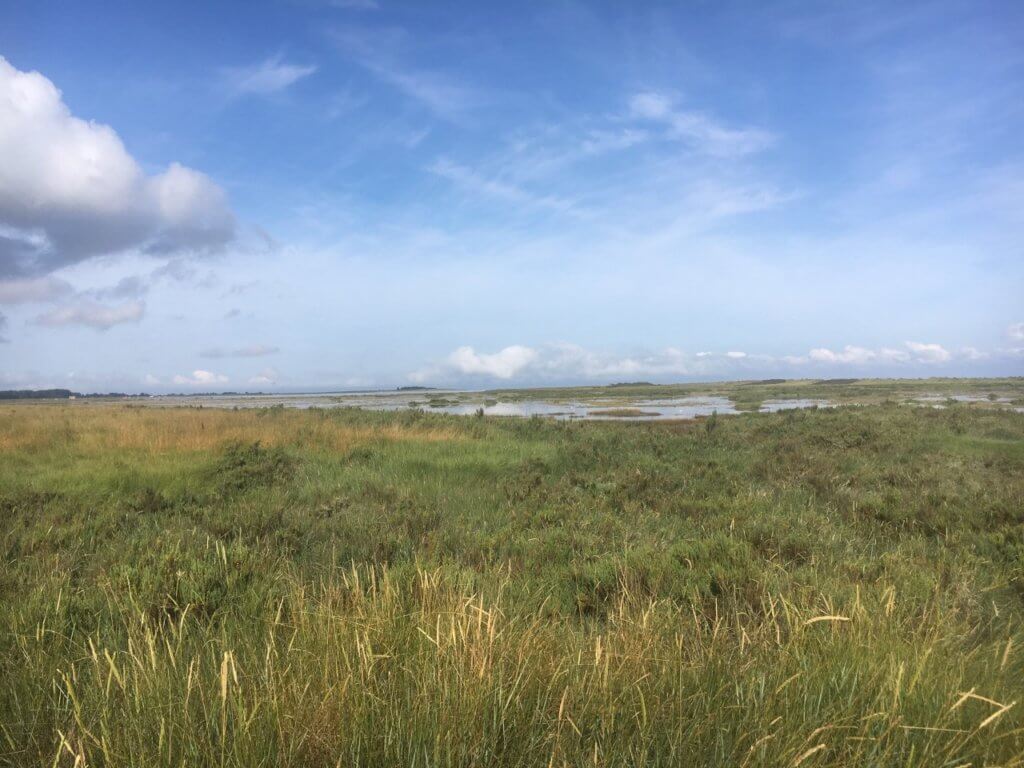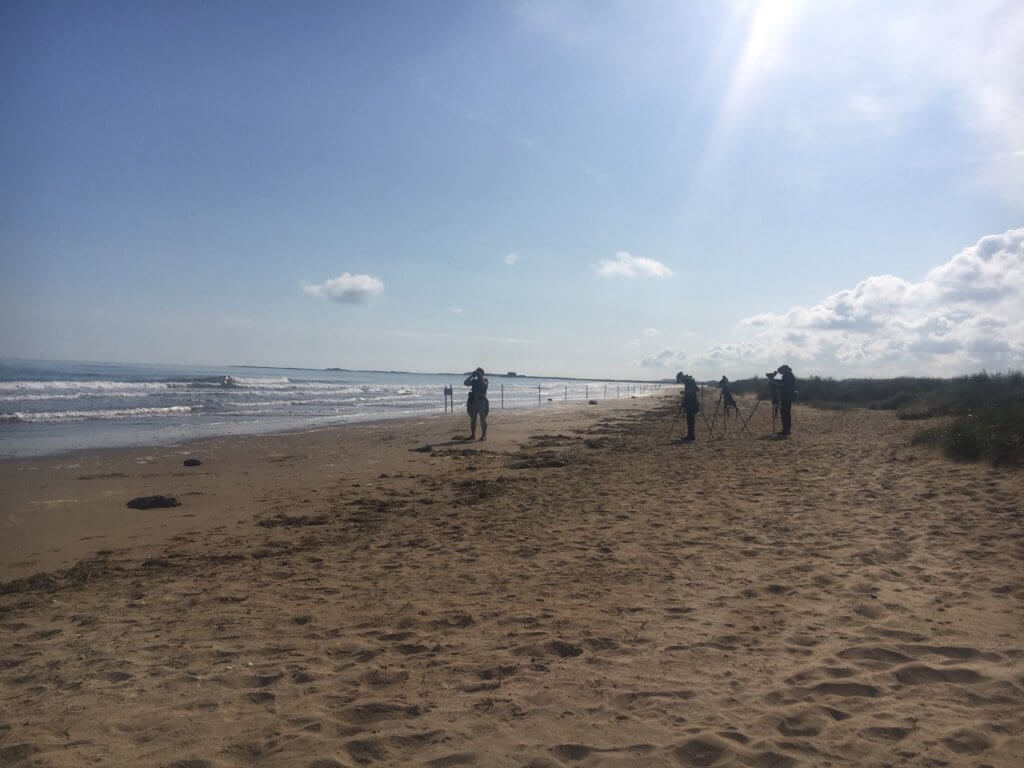
A high tide on the Norfolk coast was the excuse for spending Saturday at Titchwell – but who really needs an excuse to be on the east coast in August (even early August)? For normal people, early August is summer – near the beginning of the school holidays and a break from work. For birders it is early autumn – autumn starts somewhere around the middle of July as the birds from the high Arctic, particularly those who are failed breeders, start heading south, at a more leisurely pace than their northward passage of just a few months ago, and pass through the UK on their way to Africa. Autumn lasts from mid-July to early November when the woods along the coast from Titchwell will have shed most of their leaves and the Pallas’s Warblers can sometimes be seen sparkling in the branches.
The saltmarsh was as flooded at high tide as I’ve ever seen it and the freshwater marsh was packed with waders providing a delightfully intricate bird identification puzzle. Any wader at all might be out there and you might well expect there to be upwards of 20 species. The Avocet doesn’t pose many identification challenges so that’s the first one in the bag! But, let’s just mention that Titchwell was packed with Avocet adults and well-grown young. Oystercatchers too were here in small numbers but are easy to add to the list. Waders calling maker it a bit easier: the Curlews occasionally bubbled and several Whimbrels (mostly from Iceland) were 7-whistling. That’s four species. The noisy guardians of the marshes, Redshank, were numerous and obvious – five species. There are two species of godwit, Black-tailed (again mostly, probably, from Iceland) and Bar-tailed, from much futher north, and they were good enough to be flying around so that the ones with wingbars (Blackwits) and the ones without (Barwits) were easy to pick out (seven species). With a flock of Barwits there was a single Knot which whiffled down into the freshwater marsh to sit out the high tide (eight species). Scatterred over the marsh were many Ruff – one of the more variable-looking species (and the males are much larger than the females (so much so that the females are given their own name of reeves)) – nine species. A single Grey Plover, in cracking plumage, was pointed out to me (10 species) – was this a failed breeder from very high latitudes (it looked very fine indeed) or had it not bothered to breed this year (it didn’t say)? Not far from the Grey Plover were some Golden Plovers which might have been nesting on a UK grouse moor this year, or might have dropped down to Titchwell from Scandinavia or Iceland (11 species). Just outside the hide was a single Green Sandpiper which might have nested in a thrush’s nest high in a spruce tree in Norway, and scattered around the marsh were half a dozen or more Wood Sandpipers which nest on the ground and are rare UK breeders but these are probably Scandinavian birds (13 species). Oh yes – lots of Lapwings too (14 species). But it’s time to get to grips with the small flocks of small waders, looking even smaller as they are a fair way away. At this time of year most of them are Dunlin, some still sporting their black bellies of the breeding season. They may have got here from many places NE or NW of Norfolk but I like to think that some were hovering, Skylark-like, above dubhlochan systems in the Flow Country of Caithness and Sutherland in May (they probably weren’t) (15 species). Amongst the Dunlin one is trying to pick out a larger bird with a longer beak (Curlew Sandpiper) and/or a smaller bird with a stumpy beak (Little Stint). Only one of the latter was found by me, and none of the former, a bit of a disappointment, but that brings us up to 16 species.
So within about 10 minutes of concentrated wader watching we are on 16 species. There is more to be done. There must be a Curlew Sandpiper here somewhere and Spotted Redshank, Ringed Plover, Little Ringed Plover, Greenshank, Common Sandpiper maybe a Snipe and the beach should provide Sanderling and Turnstone, at least. Well, I saw three of those species, and so managed only to get to 19 species, but I bet several of the others were present too.
Still, it was a great day with waders. The birds are on the move – it’s not their summer holidays, they are on autumn migration. It’s a far less frenzied migration than spring – there is no sex at the end of it – but there’s no point hanging around in the Arctic, or even the north of Britain, when you are spending the winter in southern Europe or Africa.
I saw 77 species in my day at Titchwell – which seemed pretty good, and the complete list for the reserve that day was 99 species – you can’t see everything! And although I don’t feel too gutted about not seeing a Magpie or Jackdaw all day on the reserve, it is interesting to learn what one probably missed.
The ‘best’ birds of the day were four adult Arctic Skuas that scared off many waders by flying, menacingly, over the fresh marsh. They looked superb, and they stuck together like a pack of wolves, full of strength, full of challenge, full of violent potential but just flying rather than attacking as I watched them. Two dark phase, two pale phase – killers from the north and they looked wonderful.
Titchwell will have great birds next weekend too, but as one birder said as he passed by ‘See you at Carsington next weekend‘.
Titchwell has more great days to offer through August, and September, and October and in every month.
